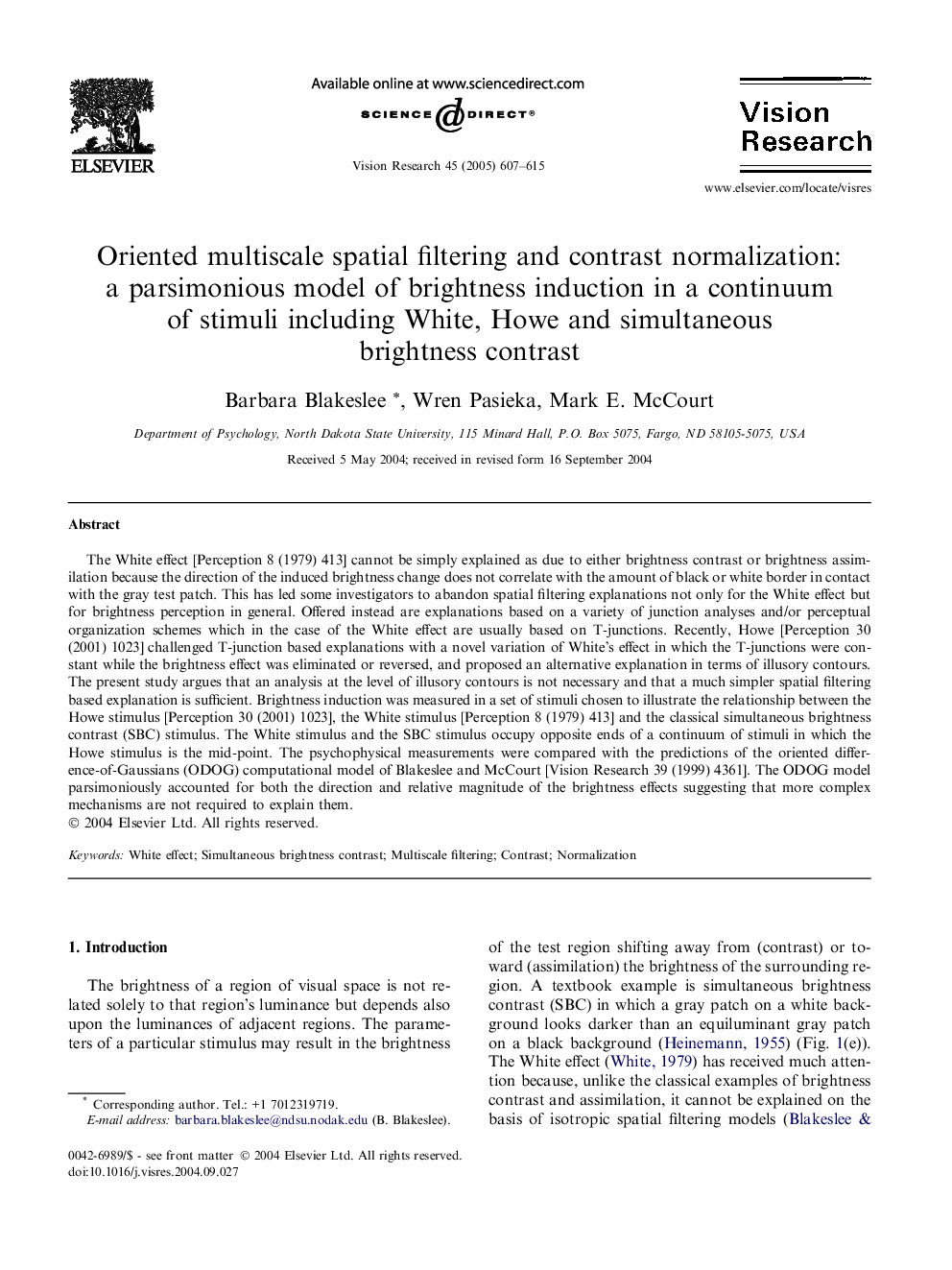| کد مقاله | کد نشریه | سال انتشار | مقاله انگلیسی | نسخه تمام متن |
|---|---|---|---|---|
| 9348525 | 1263584 | 2005 | 9 صفحه PDF | دانلود رایگان |
عنوان انگلیسی مقاله ISI
Oriented multiscale spatial filtering and contrast normalization: a parsimonious model of brightness induction in a continuum of stimuli including White, Howe and simultaneous brightness contrast
دانلود مقاله + سفارش ترجمه
دانلود مقاله ISI انگلیسی
رایگان برای ایرانیان
کلمات کلیدی
موضوعات مرتبط
علوم زیستی و بیوفناوری
علم عصب شناسی
سیستم های حسی
پیش نمایش صفحه اول مقاله

چکیده انگلیسی
The White effect [Perception 8 (1979) 413] cannot be simply explained as due to either brightness contrast or brightness assimilation because the direction of the induced brightness change does not correlate with the amount of black or white border in contact with the gray test patch. This has led some investigators to abandon spatial filtering explanations not only for the White effect but for brightness perception in general. Offered instead are explanations based on a variety of junction analyses and/or perceptual organization schemes which in the case of the White effect are usually based on T-junctions. Recently, Howe [Perception 30 (2001) 1023] challenged T-junction based explanations with a novel variation of White's effect in which the T-junctions were constant while the brightness effect was eliminated or reversed, and proposed an alternative explanation in terms of illusory contours. The present study argues that an analysis at the level of illusory contours is not necessary and that a much simpler spatial filtering based explanation is sufficient. Brightness induction was measured in a set of stimuli chosen to illustrate the relationship between the Howe stimulus [Perception 30 (2001) 1023], the White stimulus [Perception 8 (1979) 413] and the classical simultaneous brightness contrast (SBC) stimulus. The White stimulus and the SBC stimulus occupy opposite ends of a continuum of stimuli in which the Howe stimulus is the mid-point. The psychophysical measurements were compared with the predictions of the oriented difference-of-Gaussians (ODOG) computational model of Blakeslee and McCourt [Vision Research 39 (1999) 4361]. The ODOG model parsimoniously accounted for both the direction and relative magnitude of the brightness effects suggesting that more complex mechanisms are not required to explain them.
ناشر
Database: Elsevier - ScienceDirect (ساینس دایرکت)
Journal: Vision Research - Volume 45, Issue 5, March 2005, Pages 607-615
Journal: Vision Research - Volume 45, Issue 5, March 2005, Pages 607-615
نویسندگان
Barbara Blakeslee, Wren Pasieka, Mark E. McCourt,